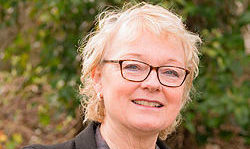I was diagnosed with a 60 mm invasive lobular tumour in my left breast (estrogen receptor, progesterone receptor and human epidermal growth factor receptor 2 [HER2] negative) without lymph node involvement in June 2015. Fortunately, I found the lump myself (in between mammograms) and was able to get it detected quickly.
My breast cancer treatment journey lasted 3.5 years, starting with various diagnostic tests and a therapeutic mammoplasty (lumpectomy), followed by adjuvant chemotherapy (September–December 2015), mastectomy (for clear margins in January 2016) and then 3 weeks of radiotherapy to the chest wall (May 2016) and excision of a seroma cavity (June 2017).
The chemotherapy was not a pleasant experience and it knocked the stuffing out of me, so when it came to a choice of mastectomy with or without immediate reconstruction, I opted for a straight mastectomy. I just wanted to get rid of the offending breast, forget all about it and get on with my life. I decided I would be fine with a prosthesis, wearing a post-surgery bra and the right neck line. I believed that, if I looked normal in clothes, I would be fine.
I was prescribed and tried three different types of endocrine therapy: anastrozole, letrozole and tamoxifen. My oncologist worked quite hard at trying to convince me to take this; however, each one made me feel like a zombie and I decided I couldn’t tolerate any of them. I made a conscious choice for ‘quality’ over ‘quantity’ of life. I hope I don’t regret this decision. My oncologist blinded me with data that support women taking this endocrine therapy to ensure that their breast cancer doesn’t return; however, the evidence wasn’t powerful enough to get me to choose ‘quantity’ over ‘quality’.
Throughout all my treatment, I saw the same oncoplastic breast surgeon and oncologist. This was a great comfort to me, as I felt that they had been able to get to know me a little and treated me like a person, not just a patient. During one or two of my routine follow-up appointments, my surgeon gently suggested that I may want to consider delayed breast reconstruction and right breast symmetrization. I said no initially; however, when she explained that I would be a good candidate for reconstruction with extended latissimus dorsi (LD) flap (using a muscle from my back) and an implant, and that she would be the one to perform the surgery, I agreed to go ahead. She had carried out the previous three rounds of surgery and I was happy with the results, as far as one can be in such circumstances. So, I had three more operations (in February 2018, April 2018 and July 2018). The last one was nipple reconstruction.
The final piece of the jigsaw was to have an areola tattoo, which I had in November 2018. I was finally signed off by my surgeon as having completed the journey in January 2019, 2 weeks ago.
So now, 3.5 years after this journey began, I am a bit scarred, my hair has grown back (although not as thick as it was before I had chemo), I have tattooed eyebrows because they fell out during chemo and didn’t really grow back, and I feel that I have returned to ‘near’ normal.
Reflecting on this whole experience, I would say that it wasn’t as bad as it could have been. Cancer kills, and I am still alive. I am grateful for that. I feel blessed by the highly capable and talented medical professionals who treated me. My employer, my lovely colleagues and my family were wonderfully supportive and helpful during this experience and I am forever grateful for that too. They could have made it so much harder for me but instead they carried me through it.
I am also grateful for all the research and investment into cancer treatments, which has meant that people like me can now survive this nasty disease and I, for one, can pretty much get on with my life as if it never happened.
A word of advice for women – find out how to check your breasts for abnormalities and do it regularly; cancer caught early has a good outcome.
According to Cancer Research UK: ‘Incidence rates for breast cancer are projected to rise by 2% in the UK between 2014 and 2035, to 210 cases per 100 000 females by 2035’.
A word of advice for men too. I am no expert of course, however, please don’t be embarrassed or worried about going to your GP to get checked out if you have any unusual symptoms.
Again, according to Cancer Research UK: ‘Prostate cancer incidence rates are projected to rise by 12% in the UK between 2014 and 2035, to 233 cases per 100 000 males by 2035’.
Jeanette Costigan, 4 February 2019, World Cancer Day

